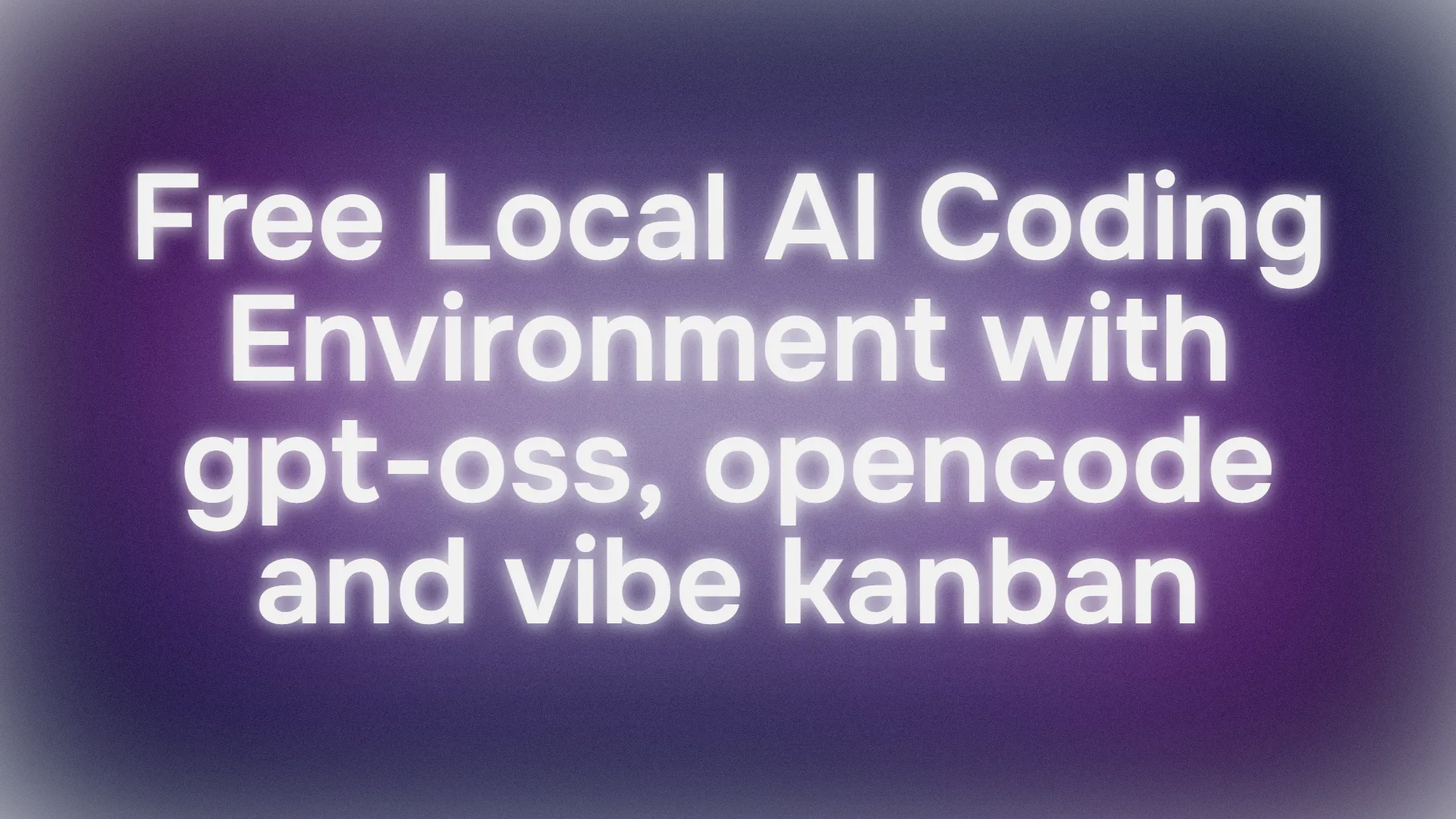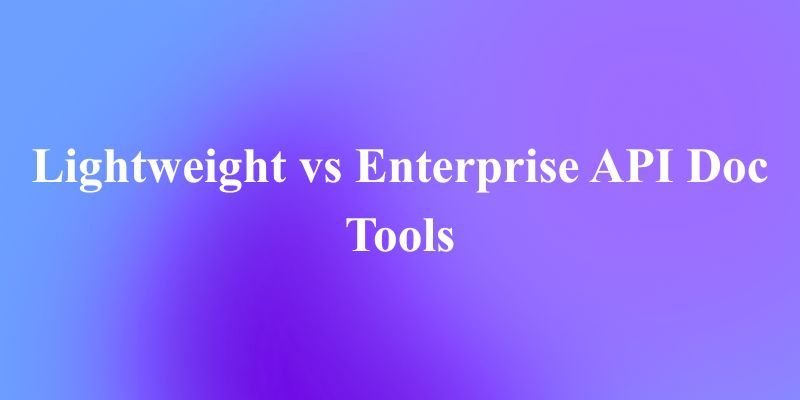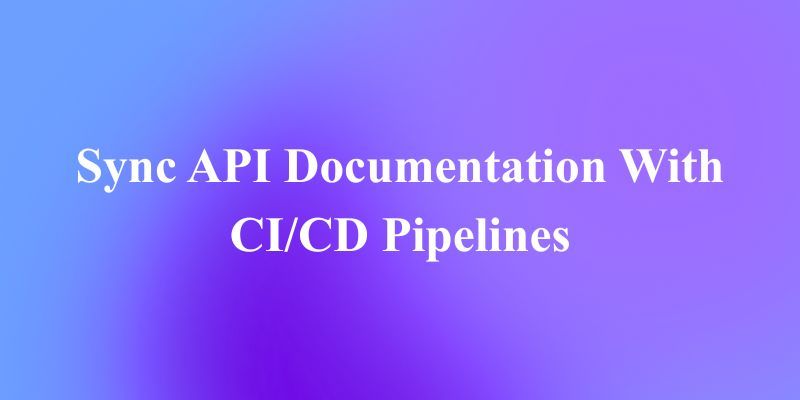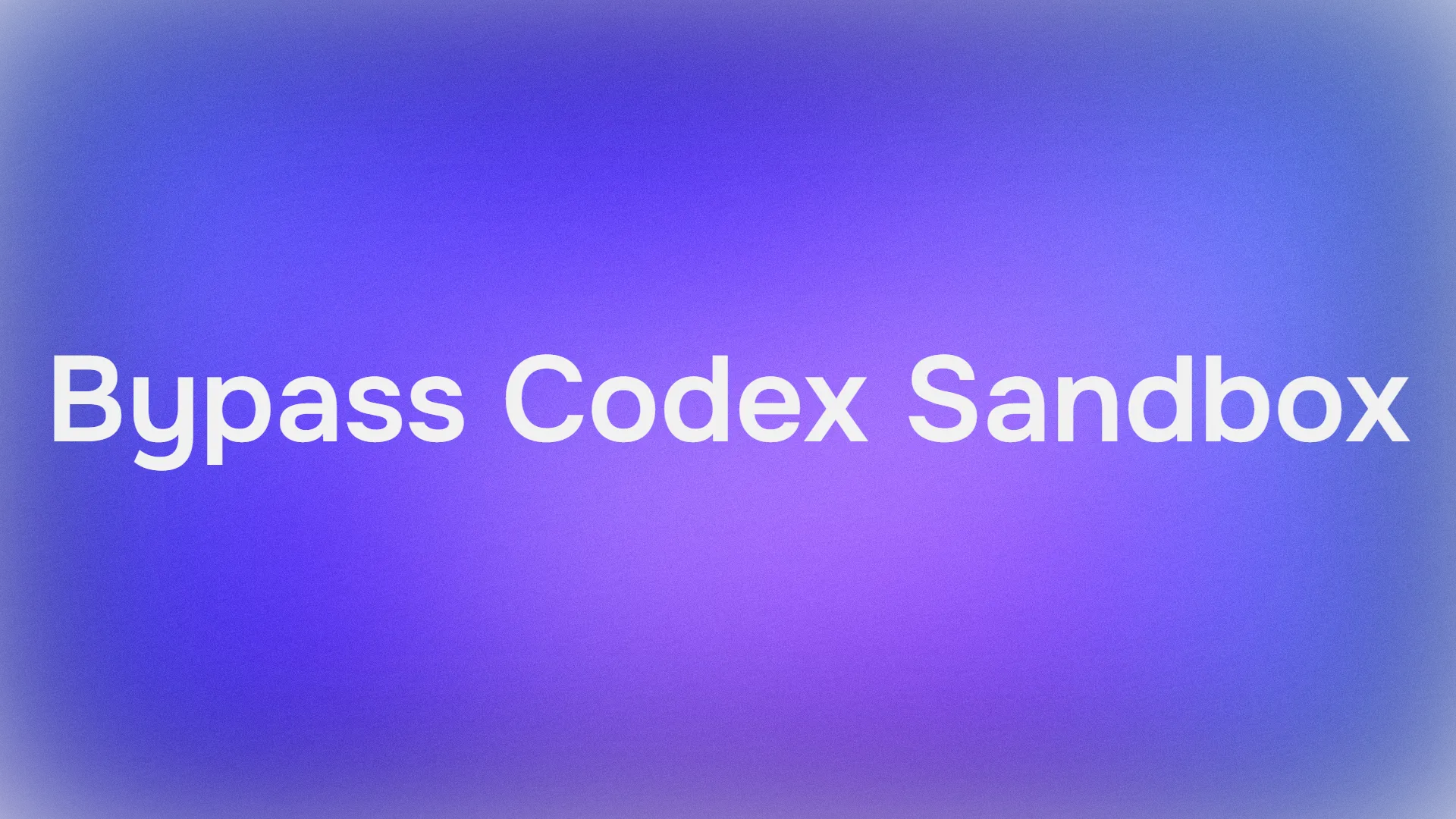Hey, coders! Want to supercharge your development workflow with a free, local AI coding setup? You’re in the right place! Today, we’re diving into how to create a powerful, open-source AI coding environment using GPT-OSS, Opencode, and Vibe Kanban. These tools let you code smarter, automate tasks, and manage projects—all without breaking the bank. In this guide, we’ll walk you through setting up Opencode with the GPT-OSS model to build a portfolio website, then use Vibe Kanban to manage and enhance it. By the end, you’ll have a local, AI-driven coding powerhouse. Let’s get coding with GPT-OSS, Opencode, Vibe Kanban!
Want an integrated, All-in-One platform for your Developer Team to work together with maximum productivity?
Apidog delivers all your demands, and replaces Postman at a much more affordable price!
What Are GPT-OSS, Opencode, and Vibe Kanban?
Before we jump in, let’s meet the stars of our AI coding trio:
- GPT-OSS: Released by OpenAI on August 5, 2025, GPT-OSS is an open-weight model available in two sizes: 20B (lightweight) and 120B (heavy-duty). It’s designed for reasoning and coding, running locally via Ollama for privacy and cost savings. Think of it as your personal AI coding assistant, free under the Apache 2.0 license.
- Opencode: An open-source AI coding agent from SST, Opencode runs in your terminal, leveraging tools like
read,write, andeditto interact with your codebase. It’s provider-agnostic, supports GPT-OSS, and integrates with Language Server Protocols (LSPs) for smarter coding. It’s perfect for local, privacy-focused development. - Vibe Kanban: A modern project management tool that integrates AI agents like Opencode to automate coding tasks. It connects to GitHub, letting you manage projects via a Kanban board (To-Do, In Progress, In Review). It’s ideal for streamlining workflows and collaborating with AI on code changes.
Together, these tools create a free, local environment where GPT-OSS powers the AI, Opencode handles coding tasks, and Vibe Kanban organizes your projects. Let’s set it up!

Step 1: Install Opencode
First, we need to install Opencode, the backbone of our AI coding environment. It’s super easy on macOS/Linux, with a manual option for Windows.
For macOS/Linux
Run one of these commands in your terminal:
- YOLO Method (quick and easy):
curl -fsSL https://opencode.ai/install | bash
- Package Managers:
npm i -g opencode-ai@latest # or bun/pnpm/yarn
brew install sst/tap/opencode # macOS and Linux
paru -S opencode-bin # Arch Linux
For Windows
- Visit github.com/sst/opencode/releases (e.g., v0.3.112 as of August 2025).
- Download the latest
opencode.exebinary. - Save it to a directory (e.g.,
C:\opencode).
Test the Installation
Verify Opencode is working:
- macOS/Linux: Run
opencodein your terminal. - Windows: Run
<path-to-opencode>/opencode.exe(e.g.,C:\opencode\opencode.exe).
You should see the Opencode terminal UI (TUI) load. If not, check your PATH or binary location.
Pro Tip: For Windows, add the binary folder to your PATH for easier access.
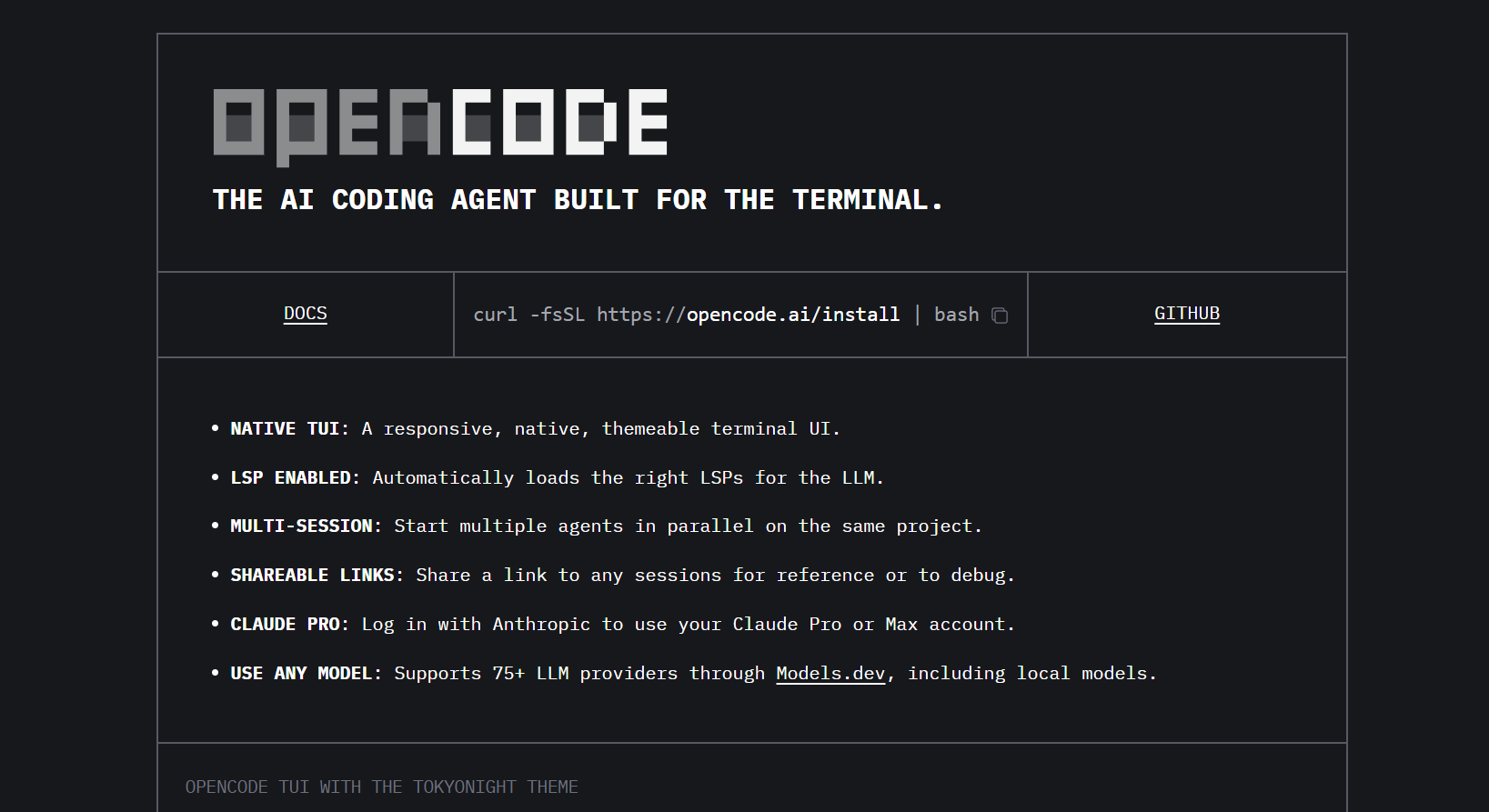
Step 2: Set Up Your Opencode Project
Let’s create a new project folder to build a portfolio website using Opencode and GPT-OSS. We’ll configure it with custom settings.
Create Project Folder:
mkdir opencode-vibekanban-project
cd opencode-vibekanban-project
Add AGENTS.md:
Create a file named AGENTS.md with:
# Tooling rules for Opencode
- Use Opencode tools only: read, write, edit, list, glob, grep, webfetch, bash, task, todowrite, todoread.
- Do NOT call non-existent tools like Repo_browser.*.
- Prefer `edit` for modifying existing files; use `read` to inspect before editing.
This defines rules for Opencode’s AI agent, ensuring it uses the right tools.
Add opencode.json:
Create opencode.json to configure GPT-OSS (20B model):
{
"$schema": "https://opencode.ai/config.json",
"provider": {
"ollama": {
"npm": "@ai-sdk/openai-compatible",
"name": "Ollama (local)",
"options": {
"baseURL": "http://localhost:11434/v1"
},
"models": {
"gpt-oss:20b": { "name": "gpt-oss 20B (local)" }
}
}
},
"model": "ollama/gpt-oss:20b",
"agent": {
"build": {
"description": "Default coding mode with only Opencode tools.",
"tools": {
"read": true,
"write": true,
"edit": true,
"bash": true,
"grep": true,
"glob": true,
"list": true,
"webfetch": true,
"patch": true,
"todoread": true,
"todowrite": true
},
"prompt": "{file:./AGENTS.md}"
}
},
"instructions": ["AGENTS.md"]
}
Want to use the more powerful GPT-OSS 120B? Replace the provider and model sections with:
"provider": {
"ollama": {
"npm": "@ai-sdk/openai-compatible",
"name": "Ollama (local)",
"options": {
"baseURL": "http://localhost:11434/v1"
},
"models": {
"gpt-oss:120b": { "name": "gpt-oss 120B (local)" }
}
}
},
"model": "ollama/gpt-oss:120b"
Note: Save AGENTS.md and opencode.json in opencode-vibekanban-project. These files tell Opencode to use GPT-OSS and follow specific tooling rules.
Step 3: Install and Run GPT-OSS with Ollama
GPT-OSS runs locally via Ollama, a lightweight tool for managing LLMs. You’ll need a decent machine (16GB+ RAM for 20B, 64GB+ for 120B).
- Install Ollama:
- Download and install from ollama.ai for macOS, Linux, or Windows (WSL2 recommended).
2. Pull GPT-OSS Model:
- For 20B (lighter, faster):
ollama pull gpt-oss:20b
- For 120B (more powerful, slower):
ollama pull gpt-oss:120b
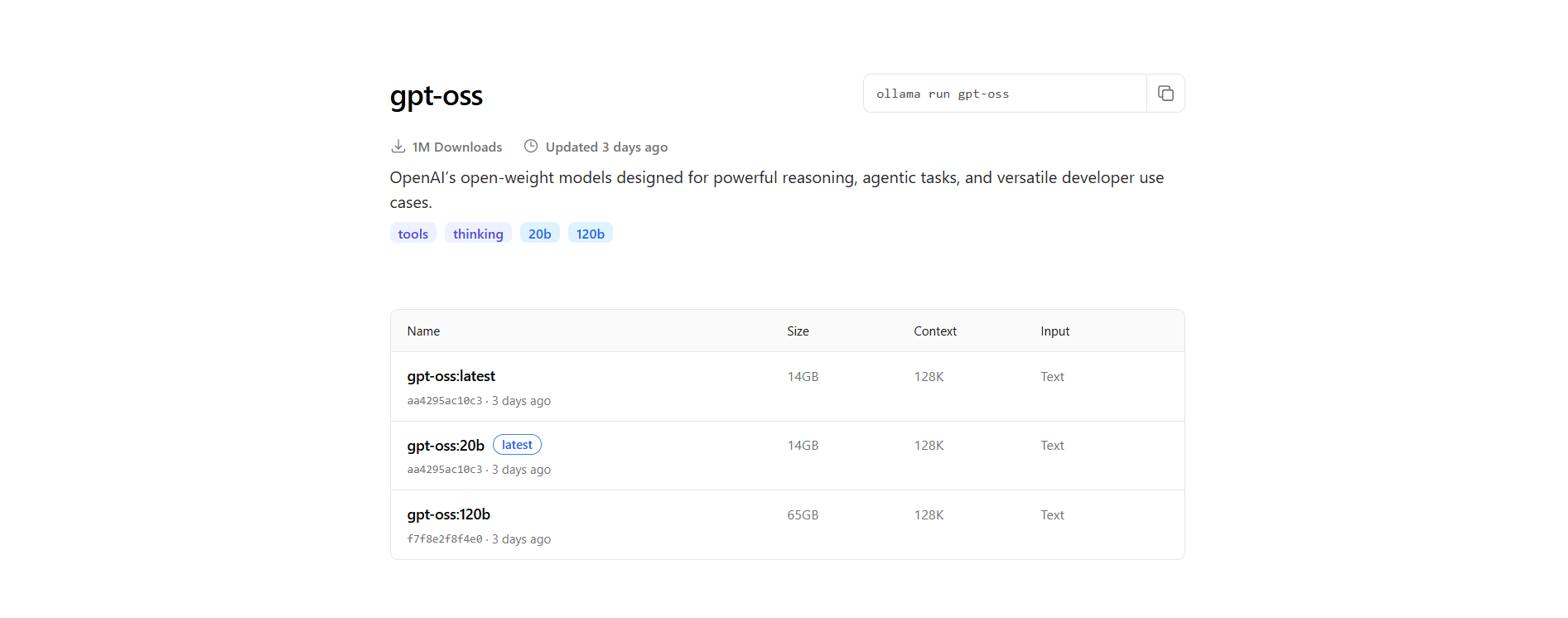
3. Run the Model:
- Start the model (choose one):
ollama run gpt-oss:20b
or
ollama run gpt-oss:120b
- This starts the Ollama server at
http://localhost:11434, matching thebaseURLinopencode.json.
Pro Tip: Ensure Ollama is running before starting Opencode, or you’ll get connection errors.
Step 4: Run Opencode for Your Project
Now, let’s fire up Opencode in your project folder:
- Navigate to Project:
cd opencode-vibekanban-project
2. Run Opencode:
- macOS/Linux:
opencode .
- Windows:
<path-to-opencode>/opencode.exe .
- The
.tells Opencode to use the current directory (opencode-vibekanban-project).
3. Verify Setup:
- Opencode’s TUI should load, showing the project folder and GPT-OSS model selected (no manual config needed thanks to
opencode.json).
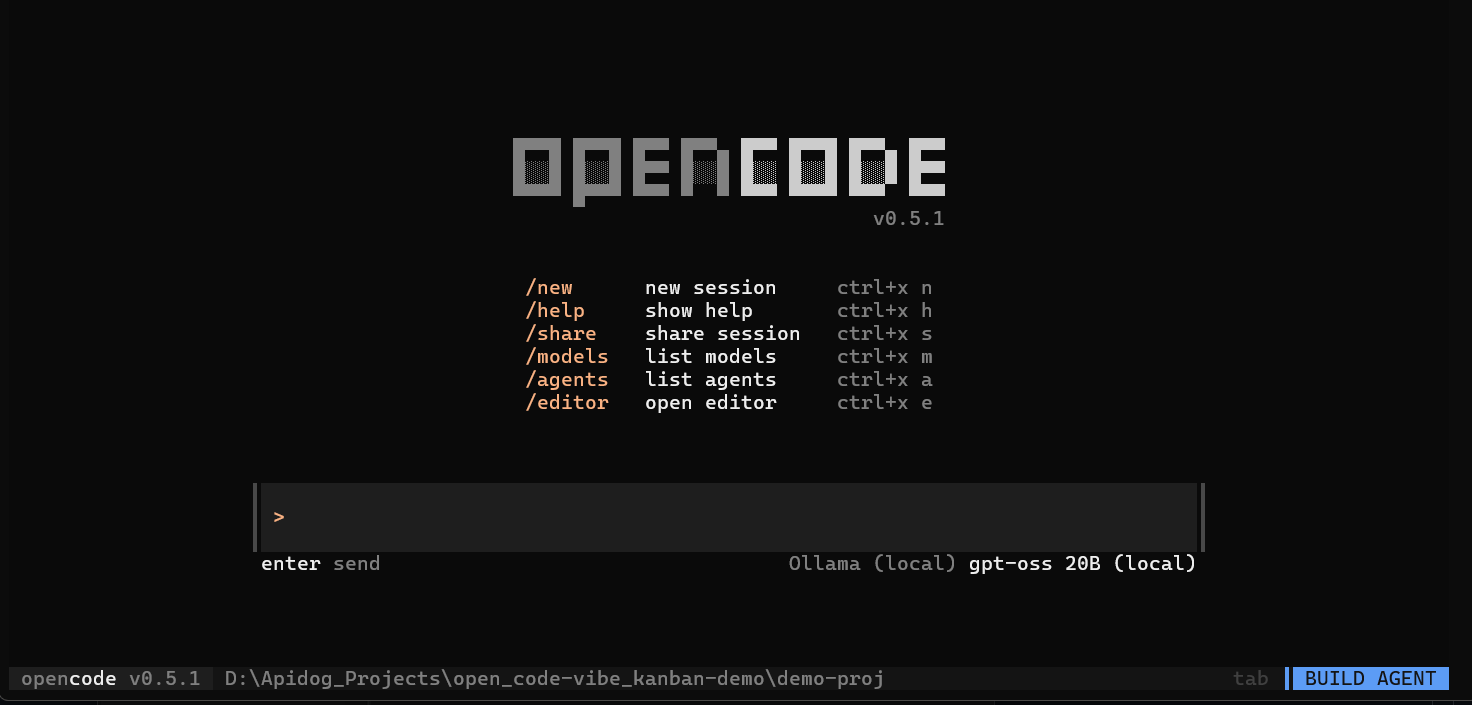
Step 5: Create a Portfolio Website with Opencode
Let’s use Opencode and GPT-OSS to build a simple portfolio landing page for a developer named John Doe, using React with Vite.
Enter the Prompt:
- In Opencode’s TUI, type:
Create a simple portfolio landing page for a developer called John Doe in React with Vite.
- Press Enter. Opencode uses GPT-OSS to generate the project, creating files like
index.html,src/App.jsx, andvite.config.js.
Run the Website:
- Navigate to the generated project folder (e.g.,
john-doe-portfolioinsideopencode-vibekanban-project). - Install dependencies and start:
npm install
npm run dev
- Open
http://localhost:5173to view the site.
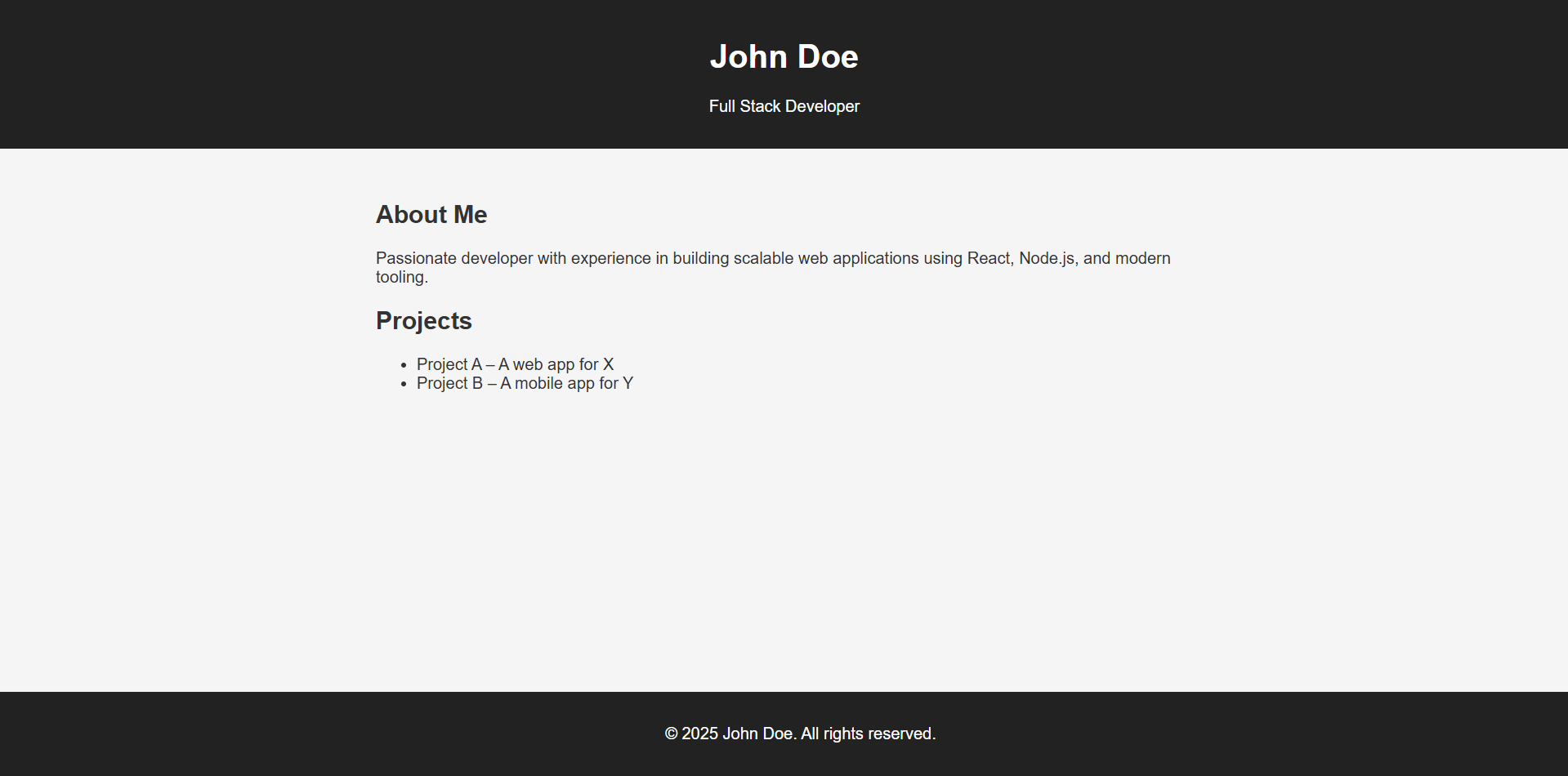
Push to GitHub:
- Create a new GitHub repository (e.g.,
john-doe-portfolio). - Initialize Git and push:
git init
git add .
git commit -m "Initial portfolio website"
git remote add origin https://github.com/your-username/john-doe-portfolio.git
git push -u origin main
Pro Tip: Use Opencode’s webfetch tool to pull inspiration from existing portfolio sites if needed.
Step 6: Set Up Vibe Kanban for Project Management
Now, let’s integrate Vibe Kanban to manage and enhance the portfolio project with AI agents.
Install Vibe Kanban:
- In a new terminal, run:
npx vibe-kanban
- This installs and launches Vibe Kanban’s web interface (usually at
http://localhost:3000).
Configure Vibe Kanban:
- In the interface, set:
- Coding Agent: Select Opencode (it detects your local setup).
- IDE: Choose your preferred IDE (e.g., Cursor, VS Code, or Windsurf).
- Connect to GitHub:
- Authenticate with your GitHub account to link repositories.
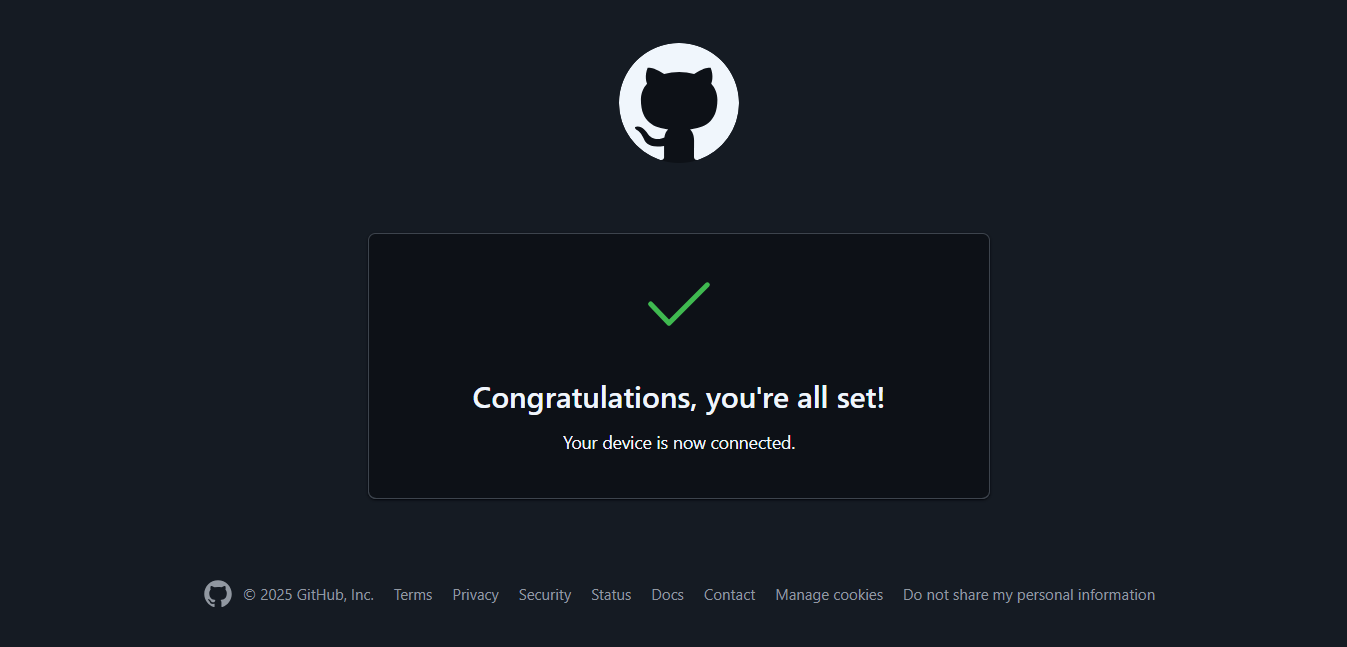
Create a New Project:
- Click Create New Project.
- Select your
john-doe-portfolioGitHub repository. - Name the project (e.g., “John Doe Portfolio”) and continue.
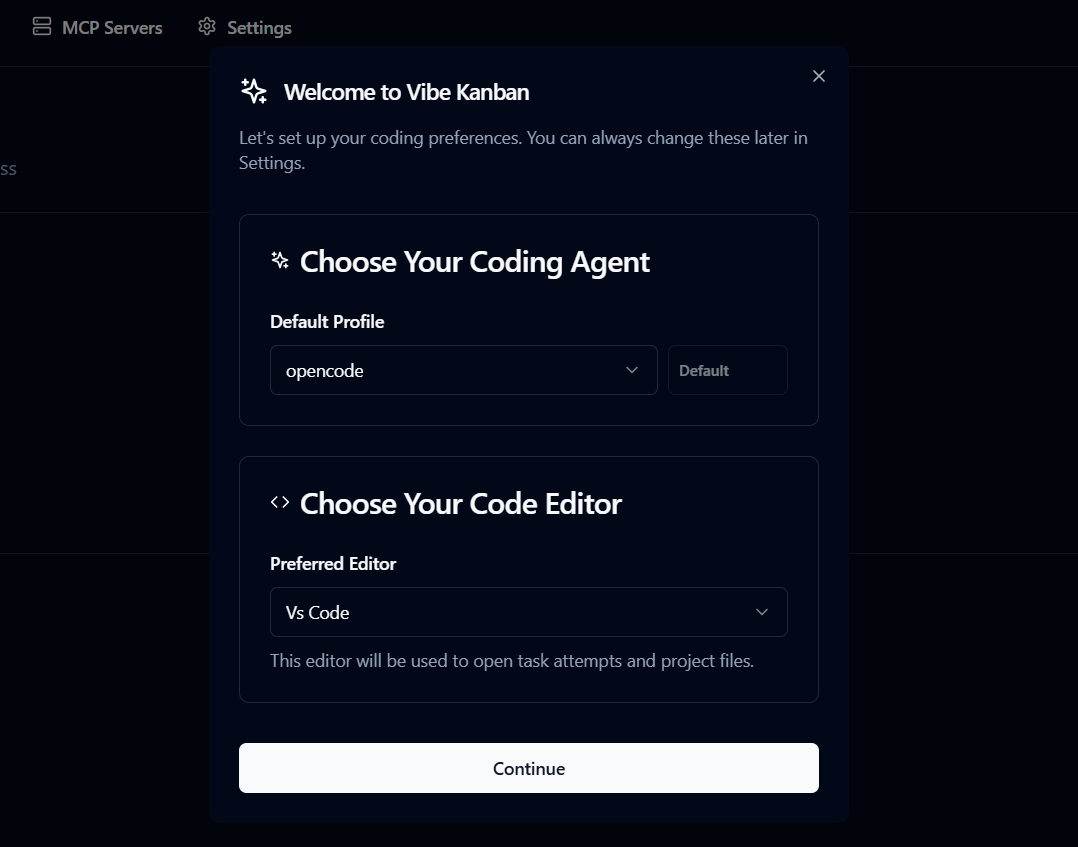
Step 7: Add Tasks with Vibe Kanban
Let’s use Vibe Kanban to enhance the portfolio by adding a new feature, like a contact form.
Create a Task:
- In Vibe Kanban, click New Task.
- Add:
- Title: “User Interface Update”
- Description: “Replace the black colour on the website with dark yellow.”
- Click Create and Start.

Select Agent:
- Choose Opencode as the agent (not Claude Code or Gemini).
- The task moves to In Progress as Opencode modifies the codebase.

Review and Approve:
- Once complete, the task moves to In Review.
- View changes in Vibe Kanban’s diff viewer or open in your IDE (e.g., VS Code).
- If satisfied, click Finish to commit and push to GitHub:
git add .
git commit -m "Added contact form"
git push
Pro Tip: Use Vibe Kanban to queue multiple tasks (e.g., “Add dark mode,” “Optimize images”) and let Opencode handle them sequentially.
Troubleshooting Common Issues
- Opencode TUI Fails? Ensure Ollama is running (
ollama ps) andhttp://localhost:11434is accessible. Checkopencode.jsonfor typos. - GPT-OSS Slow? The 120B model needs hefty RAM; switch to 20B for lighter machines.
- Vibe Kanban Not Connecting? Verify GitHub authentication and ensure the repo is public or accessible.
- Mock Data Issues? Opencode’s
todoreadandtodowritetools can debug task issues—check logs in the TUI. - Windows Binary Errors? Redownload from github.com/sst/opencode/releases if
opencode.exefails.
Why This Stack Rocks
The GPT-OSS, Opencode, Vibe Kanban combo is a developer’s dream:
- Free and Local: No cloud costs, just your machine and open-source tools.
- Powerful AI: GPT-OSS rivals paid models like Claude, with 20B/120B options.
- Flexible Workflow: Opencode’s terminal-based coding and Vibe Kanban’s Kanban board make task management a breeze.
- Community-Driven: Contribute to Opencode (1.2k forks, 19.2k stars) or Vibe Kanban to shape their future.
Users love this setup: “Opencode with GPT-OSS built my site in minutes, and Vibe Kanban kept it organized!” Try it and see why.
Conclusion
You’ve just built a free, local AI coding environment with GPT-OSS, Opencode, and Vibe Kanban! From spinning up a portfolio site to managing tasks with AI agents, you’re ready to code smarter. Experiment with new features, contribute to the repos, and share your projects in the comments. Let’s keep the AI coding revolution going!
Want an integrated, All-in-One platform for your Developer Team to work together with maximum productivity?
Apidog delivers all your demands, and replaces Postman at a much more affordable price!
